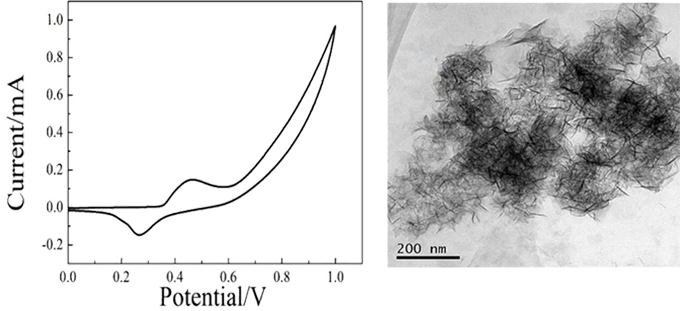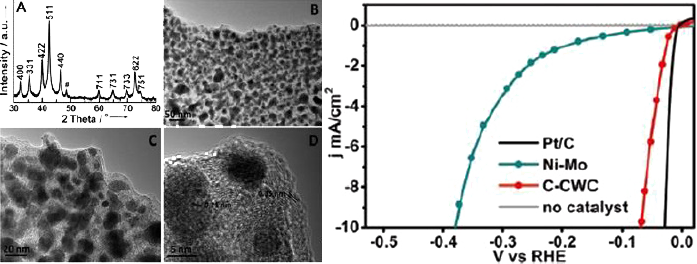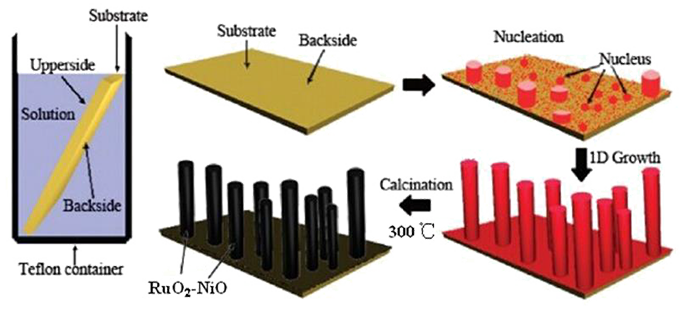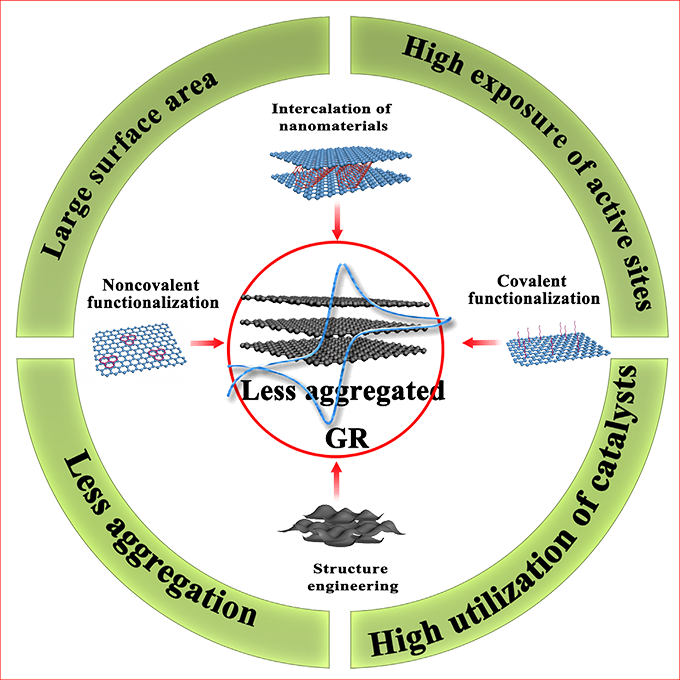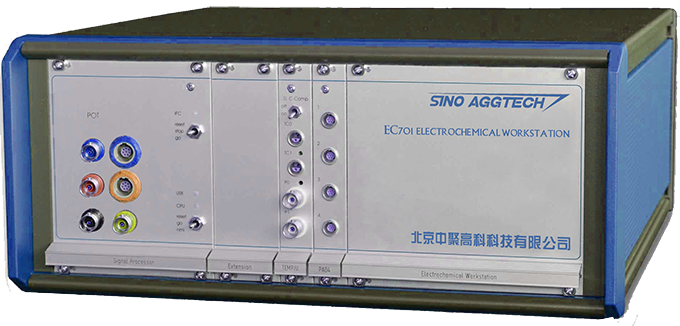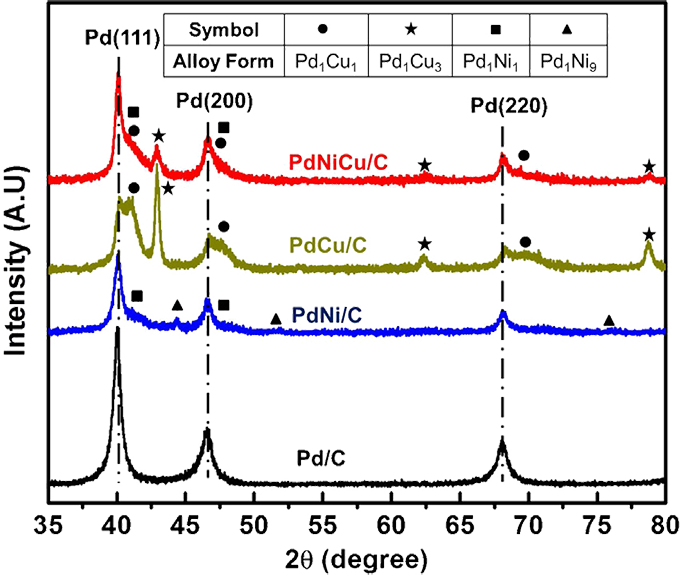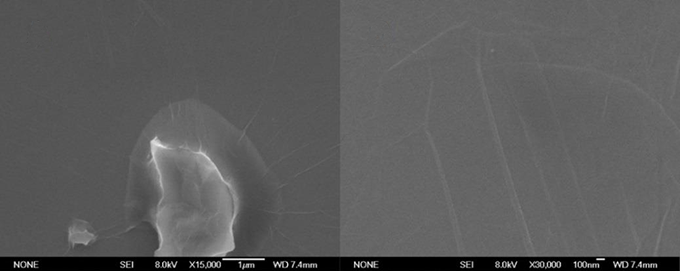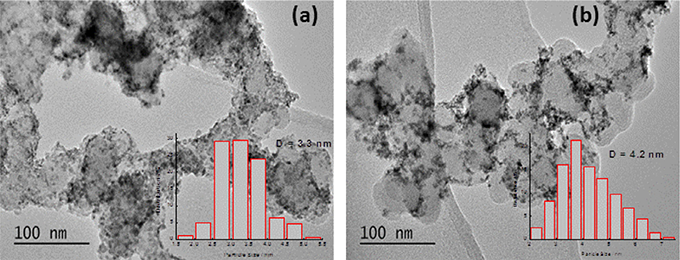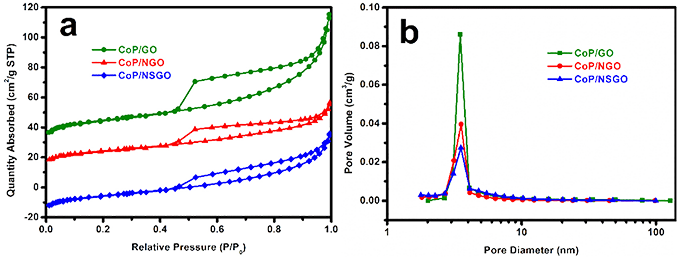Research background
In the electrochemical reaction, the surface region of the electrode is accompanied by heterogeneous catalytic reaction with charge movement, which is similar to chemical catalysis, and the electrode material can significantly affect the rate of electrochemical reaction. Under the same overpotential and a certain electrolyte, the electrode reaction speed and reaction type vary with the electrode substrate material, which is collectively called electrocatalysis in electrochemistry. In the electrocatalytic reaction, the electrode is used as the electrocatalyst, and the electrochemical reaction speed can be changed by orders of magnitude with different electrode materials, so selecting the appropriate electrode materials is an effective way to improve the electrochemical catalytic reaction efficiency. At present, the research of catalysts such as energy, sensors, fuel cells and hydrogen energy is still the focus.
Research content
Electrochemical catalysis research mainly focuses on electrode materials, that is, catalysts. Nanomaterials have different properties from the main materials, such as small size effect, surface interface effect and quantum size effect, which have become a research hotspot in the field of catalysts and attracted wide attention from the scientific community.
Noble metal nanomaterials are the best choice of catalyst materials because of their excellent catalytic performance and stability.
Transition metal elements are often used in catalyst research because of their special valence distribution of electron orbitals, which makes their compounds have special reactivity.
Due to its special structure and properties, graphene composites have shown great potential in many aspects, such as applications in nanobiomaterials, sensors, capacitors, superconductors and catalyst carriers, as well as nanocomposites.
Equipment recommendation
The EC701C electrochemical catalytic analysis system is used to test the properties of electrochemical catalyst materials, mainly to measure current or potential changes. The use of AES-4TH to control the environment of the test system can avoid the interference of the external environment (temperature, humidity, etc.) to the system, which provides convenience for the study of the temperature characteristics of the lithium battery, and improves the repeatability of the measurement.
1. Measuring equipment
EC701C electrochemical catalytic analysis system: provides current-potential analysis, potential-time analysis, impedance analysis, etc. The equipment has stable performance and high measurement accuracy. It can be tested with three electric levels or two electrodes.
Canonical study
Cyclic voltammetry (CV) : cyclic voltammetry, also known as "electrochemical spectroscopy", is an electrochemical research method that applies a voltage that continuously changes at a constant rate to the working electrode (WE) and the reference electrode (CE), and records the relationship between the current and potential (i-E) curve. The shape of the voltammetry curve can reflect the reversibility of the electrode reaction, the adsorption state of the substance, the possibility of the formation of intermediates or new phases, etc., so it is commonly used to measure the electrode reaction parameters, judge the reaction and its properties that can occur within the entire potential scanning range, and study its control steps and reaction mechanism.
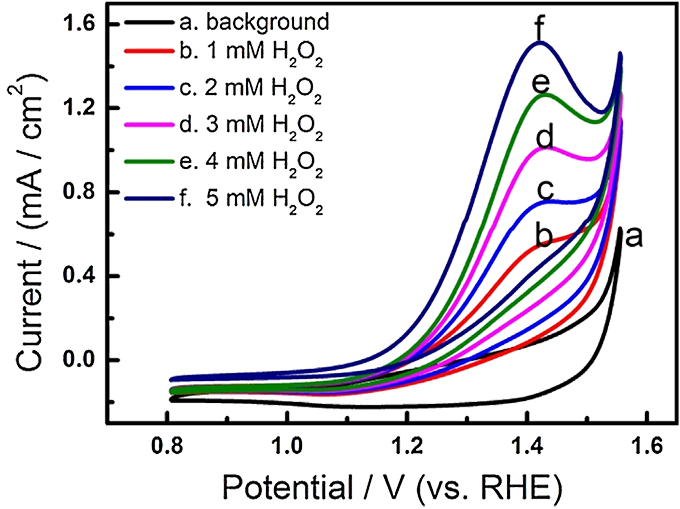
Linear sweep voltammetry (LSV) : The linear sweep potential is applied between the Work Electrode (WE) and the Counter Electrode (CE) to record the current-potential (i-E) curve. When E> When Ep is used, the current controlled by diffusion has a downward trend. The scanning speed has a great influence on the shape of the polarization curve. Only when the scanning speed is small enough can the steady-state polarization curve be obtained. On the one hand, the electrode processes occurring in a wide range of potential can be quickly understood by linear sweep voltammetry. On the other hand, the electrode reaction parameters can be estimated by analyzing the shape of the scanning curve. Therefore, this method is widely used in electrochemical experiments.
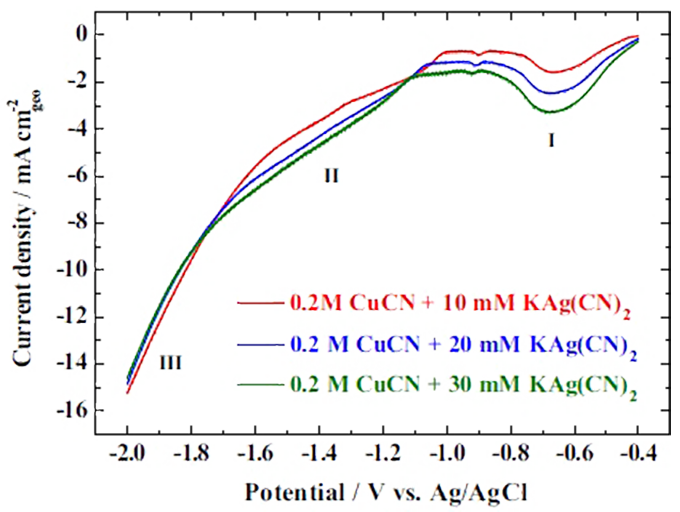
Time current (i-t) curve: a constant potential is applied on the electrolytic pool, so that a certain electroactive substance in the solution is enough to oxidize or reduce the reaction, commonly used to test the stability of the electrode material, with the extension of the reaction time, the curve tends to a stable value.
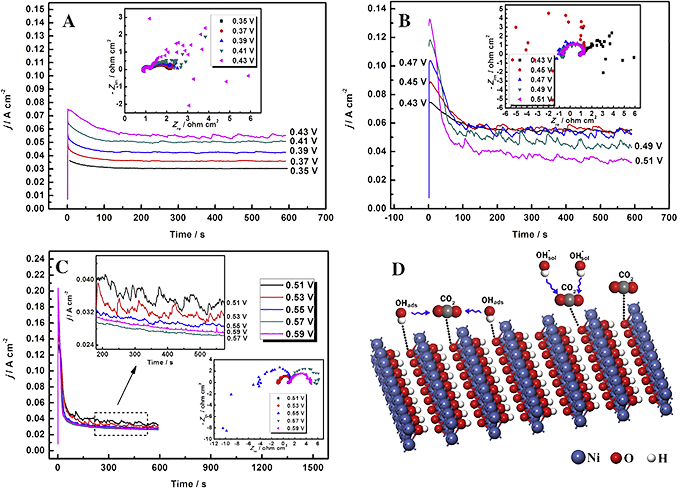
Chronopotentiometry: The use of chronopotentiometry to test electrode stability, the specific process can be described as: Before the start of the transient experiment, no current is passed through the electrode surface. At the beginning of the experiment, the current passing through the working electrode surface is suddenly jumped to a specified value, and the voltage-time (E-t) curve on the working electrode is recorded. In the process of electrolysis, with the progress of the electrode reaction, the concentration of reactants near the electrode continues to decrease and it is too late to replenish in a short time, so the electric potential also changes. In addition, when the electrode reaction includes catalytic process or dynamic process, the chronopotential curve will show different characteristics, not only related to the diffusion process of reactants on the surface of the working electrode, but also related to the type of dynamic process and the accompanying reaction speed. The diffusion coefficient can be measured by chronopotentiometry, the surface phenomenon and chemical kinetics of the electrode can be studied, and the reaction mechanism of the electrode can be explored.
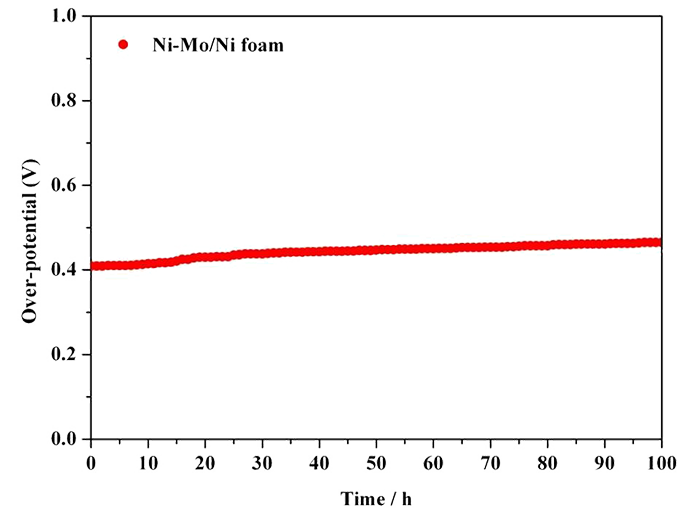
Electrochemical AC impedance (EIS) : The sinusoidal potential of different frequencies with small amplitudes is applied to the electrode system to polarize the electrode and generate the sinusoidal current response. The ratio of the potential signal to the current signal is the impedance of the electrode system. The relationship between the ratio and the change frequency of the sinusoidal potential is reflected in the impedance spectrum, where the abscissa represents the real part of the total impedance and the ordinate represents the virtual part of the total impedance. The electrochemical impedance spectrum is obtained. When this method is used, the amplitude of the electrode potential is generally not more than a few millivolts. At this time, the polarization behavior of the electrode is mainly determined by the differential electrical properties of the interface, which can generally ignore the higher order harmonic term, but the mathematical treatment is relatively simple. Various EIS spectra of the electrode system are obtained by fitting the data through computer software. By analyzing these spectra, the internal structure information of the electrode system can be obtained, the composition of the equivalent circuit of the electrolytic cell can be judged, and the kinetic parameters of the electrode reaction can be obtained, such as reaction resistance Rct, solution resistance Rs, exchange current density, etc. The control mechanism of the electrode process can also be determined.
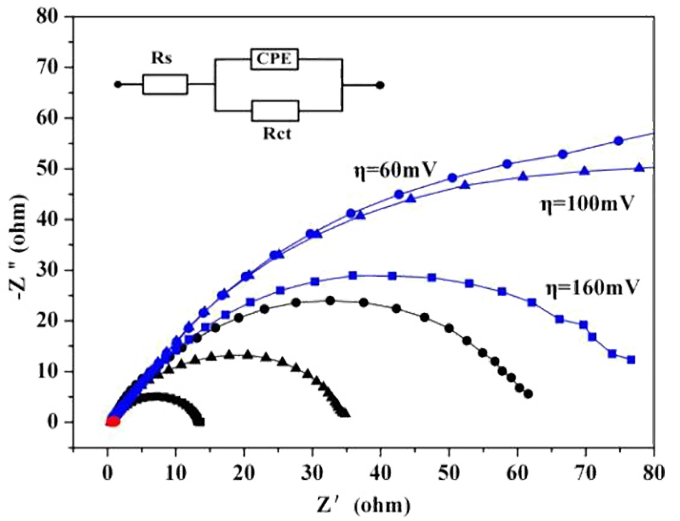
XRD: X-ray diffraction is a commonly used structural analysis method, the use of specific wavelength λ X-ray irradiation sample surface, this beam of X-rays by the object in the atomic action will be scattered, each atom generated scattered waves interfere with each other, then diffraction, analysis of diffraction wave signal, you can obtain accurate material crystal structure information, can also be phase analysis and quantitative and qualitative analysis.
XPS: X-ray photoelectron spectroscopy (XPS) is a very sensitive surface analysis technique, which can identify the surface elemental composition and chemical valence state of catalyst materials by electron binding energy.
Scanning electron microscope (SEM) : It is a kind of microscopic morphology observation instrument between transmission electron microscope and optical microscope measurement scale, which can directly use the material properties of the surface materials of the sample for microscopic imaging, mainly used for the surface morphology characterization of the sample.
Transmission electron microscopy (TEM) : Mainly used to observe the morphology, particle size and dispersion of material particles, is a more commonly used means of microscopic characterization.
N2 adsorption desorption: The specific surface area and pore size distribution of the material are mainly obtained.
reference
F. Guo, K. Ye, M.M Du, X.M Huang, K. Cheng, G.L Wang, D.X Cao, Electrochemical Impedance Analysis of Urea Electro-oxidation Mechanism on Nickel Catalyst in Alkaline Medium, Electrochim. Acta., 2016, 210, 474-482.
O. Muneeba, J. Estrada, L. Tran, K. Nguyen, J. Flores, S.Z. Hu, A.M. Fry-Petit, L. Scudieroc, S. Ha, J.L. Haan, Electrochemical Oxidation of Polyalcohols in Alkaline Media on Palladium Catalysts Promoted by the Addition of Copper, Electrochim. Acta., 2016, 218, 133-139.
Y. Lin, Y. Pana, J. Zhang, Y.J. Chen, K.A. Sun, Y.Q. Liu, C.G. Liu, Graphene Oxide Co-doped with Nitrogen and Sulfur and Decorated with Cobalt Phosphide Nanorods: An Efficient Hybrid Catalyst for Electrochemical Hydrogen Evolution, Electrochim. Acta., 2016, xxx, xxx-xxx.
S.Y. Lee, B.J. Kim, S.J. Park, Influence of H2O2 Treatment on Electrochemical Activity of Mesoporous Carbon-supported Pt-Ru Catalysts. Energy., 2014, 66, 70-76.
